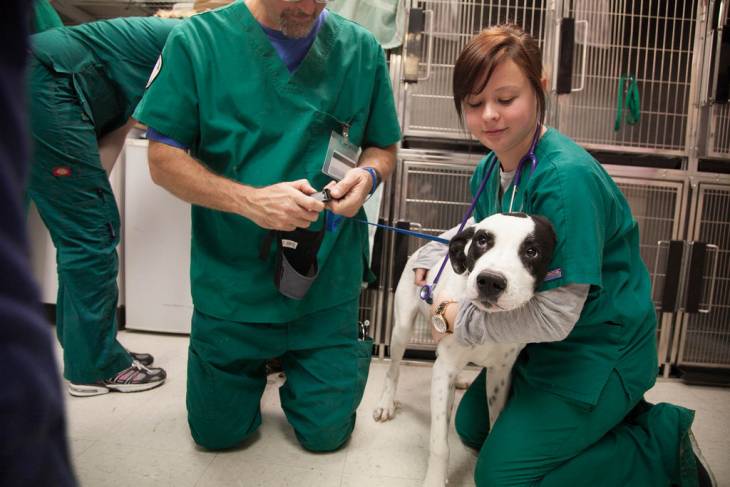How to Handle Salmonella in Dogs (A “Raw” Meaty Situation)
We know salmonella poisoning is bad news. The bacterial infection can be every bit as awful for your dog. In fact, if your dog is unlucky enough to contract salmonella, he can get wrecked big time. Fortunately, all hope is not lost if your buddy picks up the problem.
What’s the Difference Between the Salmonella that Affects Humans and the Salmonella that Affects Dogs?
Salmonella is zoonotic in nature, meaning it can pass from species to species. The salmonella infection that could get us sick from say, undercooked chicken is the same infection can affect our dog. In both cases, the condition is technically called salmonellosis, although we tend to refer simply to it as salmonella poisoning.
Because it’s the same bacteria, it’s not too surprising that a dog will experience some of the basic symptoms associated with the condition as we would. Some of these symptoms include diarrhea, vomiting, and high fever. The first signs of symptoms will typically show up about 6 to 72 hours after the initial infection.
With that being said, salmonella is capable of doing substantially more damage to your dog's body than you. Symptoms like anorexia, skin disease and an abnormally fast heart rate can be present in all canines. In the case of female dogs, conditions like abnormal vaginal discharge, miscarriage, or spontaneous abortion can occur.
Salmonella poisoning can manifest itself in a chronic form in dogs. In these instances, the dog will experience symptoms such as fever, weight loss, blood loss, non-intestinal infections, and prolonged bouts of diarrhea. These symptoms also have a tendency to be a more severe.
If Your Dog Has Salmonella, Take Care of Him Carefully
If you’re dealing with a dog suffering from salmonella, the most important thing you can do for your own safety is to be extremely careful. Remember, salmonella is highly contagious bacteria, and can be transferred from your pooch’s body to your body. Improper handling of your dog’s stool is a prime way in which the condition can be transferred, although there have been cases where seemingly benign things have been the culprit.
Treating a Dog with Salmonella
One of the main forms of salmonella treatment is to replace any nutrients the dog may have lost through vomiting or diarrhea. This includes restoring fluids and electrolytes to stave of bouts of dehydration. The restoration will also work to help your dog overcome any severe weight loss he may have developed because of the condition.
Your vet may also prescribe various drugs to help your pooch. Some of these drugs could include anti-diarrheal drugs to help regulate their poop, as well as broad spectrum antibiotics to flush the bacteria from his body. In severe cases, your vet could prescribe a plasma transfusion.
It is also important that you restrict your dog’s diet while he’s in the throes of salmonella poisoning. Restrict his feeding for several hours once you realize he has the condition, and then feed him small quantities of low-fat, easily digestible chow until his health improves. You should also limit his activity during the duration of his illness.
Keep Things Clean at All Times

Even though salmonella poisoning can do some terrible things to a dog’s health, having the condition isn’t a walk in the park for humans, either. And while not feeding your dog raw meat or carefully picking up your dog’s poop are obvious preventative measures to safeguard you from the condition, those aren’t the only things you should be mindful. Strict cleanliness as a whole is your best preventative weapon.
You should always wash your hands after you handle dog food or dog treats. You should also thoroughly wipe down any surface that has come in contact with such materials. Additionally, when you wash your dog dishes, you should do so with a non-toxic, anti-bacterial product.
By taking these preventative measures, along with the “big ticket” precautions like poop disposal, you shouldn’t have to worry about salmonella entering your home and ripping apart you and your pooch’s health. If you’ve ever experienced salmonella in the past, you know this is great news. Considering what the bacteria can do to a dog, this is even better news for your four-legged friend.

